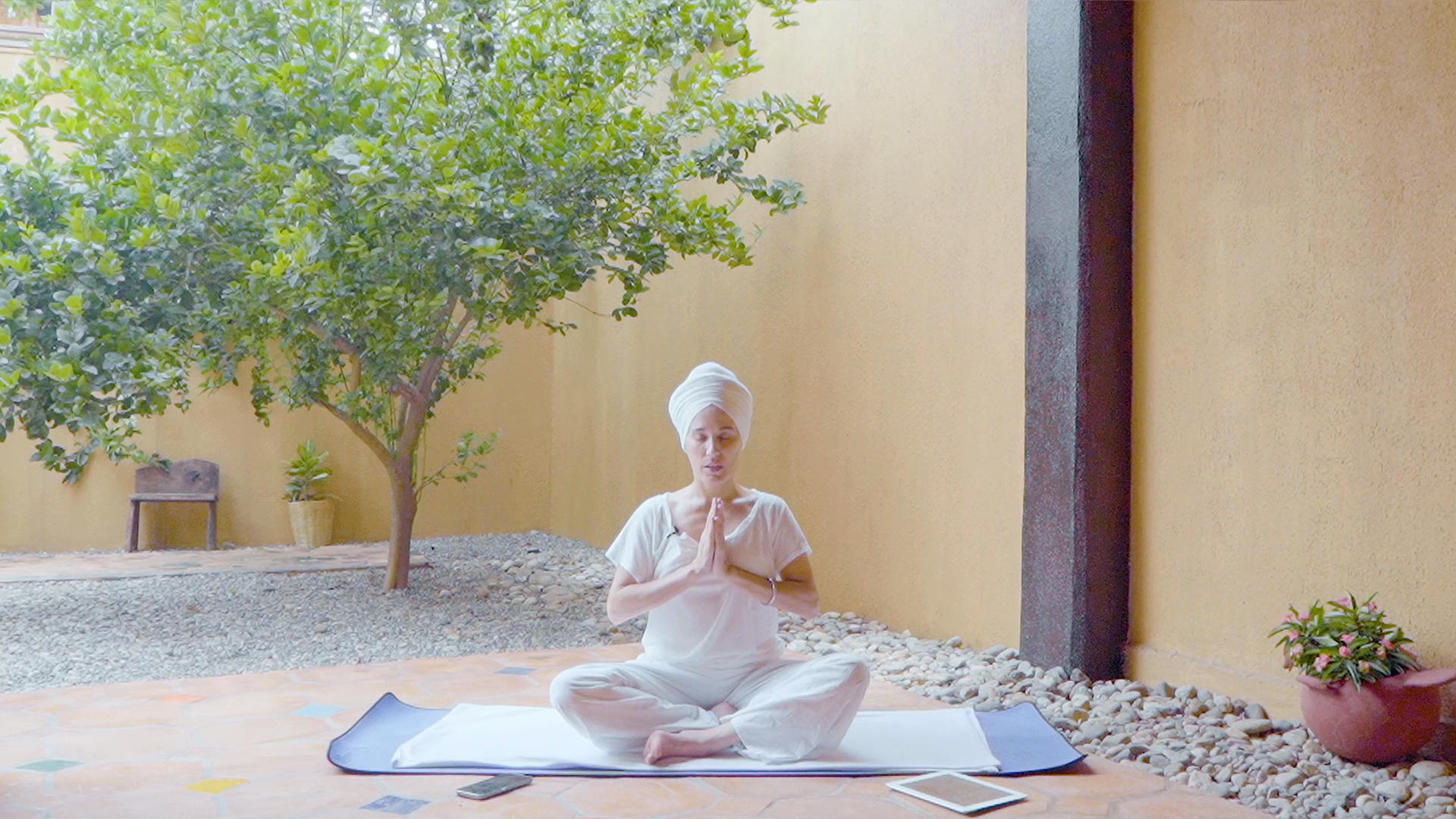
What is Kundalini & How to Use it to Meet the Fullness of Life
Whether you're a lifelong yoga practitioner or just starting your practice, chances are, you've heard the term "kundalini". Most often, what comes to mind is the modern style of Kundalini Yoga, with breathwork, chants, repetitive movements and perhaps most distinctively, practitioners clad in white apparel. However, the concept of kundalini in yoga existed long before there was a style called “Kundalini Yoga”.
In the article that follows, we will explore the history of kundalini, what it is, its unique qualities and benefits, as well as the difference between modern Kundalini Yoga and kundalini shakti. It's important to keep in mind that there are many schools of thought and perspectives when it comes to kundalini and the information presented here nearly scratches the surface of the topic.
History of Kundalini
It is said that the first references of kundalini can be found in the Upanishads, between 500 BC and 1000 BC, long before the descriptions of physical asanas which can be found in Hatha Yoga Pradipika. The concept of kundalini energy extends across Vedic, tantric and Hindu systems and is often referred to as kundalini shakti, meaning divine, limitless power. In Hinduism, kundalini is believed to be a goddess, whose power lies dormant, coiled at the base of the spine at the muladhara chakra, translated as the root chakra in English. Kundalini is also a principal focus in the Hatha Yoga Pradipika, a sanskrit text written in the 15th century, as the goal of all yoga practice.
"Just as a door is opened with a key, the yogi opens the door to liberation with kundalini." (Chapter 3, Verse 105)
With the development of modern-day yoga, the concept of kundalini remained a central theme in many schools of yoga, inspiring Yogi Bhajan - a Sikh missionary to coin, trademark, and popularize “Kundalini Yoga” as a particular style of yoga in 1968.

What is Kundalini?
Kundalini is said to be a powerful, primal energy that represents the unmanifested potential within us; it is referring to the great field of the unknown that lies beyond the limits of our minds. The term “kundal” means “coiled” and “ini” can be translated as “power”, leading to a definition of Kundalini as “the dormant energy coiled at the base of the spine”. Kundalini shakti can be seen as the very energy of all consciousness that dwells within each one of us. Often depicted as a serpent wrapped three and a half times, this powerful energy can be awakened by the physical and spiritual practices of yoga such as mantra, mudra, asana, and pranayama. When awakened, the kundalini shakti rises through the chakras (energy vortices) in the energetic body and leads to spiritual awakening manifested as freedom of choice, awareness, and a greater opportunity to live one’s life with fullness.

The 5 Inherent Qualities of Kundalini
From a point of view presented in the Demystifying Kundalini course, as one begins to engage kundalini shakti, one becomes closer in proximity to the boundless source of energy. This allows for the embodiment of the unique qualities of wholeness and vastness of the unmanifest. These qualities are:
Gyana Shakti: limitless knowledge and insight.
Embodying this quality can present itself as more solutions to challenges and ease in life.
Iccha Shakti: will and determination.
Embodying this quality leads to having the will to see things through until the end.
Ananda Shakti: self-fulfillment and true joy.
Embodying this quality brings more sense of joy and fulfillment to everyday life.
Chit Shakti: awareness of the totality.
Embodying this quality provides us with greater insight and self-awareness.
Kriya Shakti: spontaneous right action.
Embodying this quality allows for action to flow effortlessly and flawlessly by doing the right thing at the right time.
By practicing yoga that’s focused on kundalini, we open the door for a life of more possibility, greater potential, and expanded capacity. The Hatha Yoga Pradipika tells us that the goal of all yoga practice is to awaken kundalini shakti to help increase the potential for happiness and become more aware of our life’s true purpose.
Below are some practices you can do to tap into the kundalini shakti within.
4 Tips for Awakening Kundalini
Build Fire (agni) in your navel and abdominal center with energizing hatha yoga practices. Since the navel center rules the lower chakras, we begin here and start to remove any obstacles that will block the flow of kundalini rising.
Develop sensitivity to prana and clarify the central energy channel (sushumna nadi) through pranayama practices such as alternate nostril breathing.
Bring bhakti or devotional elements into your practice by connecting with self-surrender, humility, and gratitude. Try a daily journaling practice or simply take a few moments each day to pause and remember that you’re part of a vaster field of being.
Cultivate mental clarity and awareness through meditation practices and self-inquiry.
One of the things to note about kundalini awakening is that you do not need to practice the Kundalini Yoga style specifically to awaken kundalini shakti. Many forms of yoga facilitate the awakening of kundalini energy, regardless of the style you choose.

Kundalini Shakti vs. Kundalini Yoga
With kundalini shakti being such an integral concept in yogic philosophy and Kundalini Yoga being a widely popular style of practice, it is important to differentiate the two and understand the key differences.
While kundalini shakti is the essence of consciousness that dwells within each of us and is the portal to higher states of awareness, Kundalini Yoga is a systemic practice using a variety of techniques to awaken the energy. It uses sequences and kriyas that have been passed down from teacher to teacher. You can think of kundalini shakti as an umbrella under which Kundalini Yoga sits. It shares some common themes with classical hatha yoga but follows its own science and techniques. Unlike classical yoga which uses Sanskrit, the modern Kundalini yoga mantra is chanted in Ghurmuki - the language of the Sikh holy book. Kundalini Yoga brings a unique experience and a rich culture to its aspirants and is one of the more popular styles of yoga in the Western world to date. If you're curious in trying a Kundalini Yoga class, check out this practice with Sierra Hollister.

Conclusion
The overview provided in this article is simply scratching the surface of the deeply rich history and importance of kundalini shakti to the overall practice and philosophy of yoga. What’s important to take away is that a regular practice of asana, meditation, pranayama, and self-inquiry can be one of the most effective tools we have to raise our happiness, awareness, and fulfillment in life. After all, what we are trying to accomplish with a kundalini awakening and other types of spiritual practice is equivalent to what the sages of the past shared with us a long time ago - the true understanding of the unity of life we have with this planet, this universe, and each other. To awaken kundalini is to rouse the unconditional love for the self and all beings.